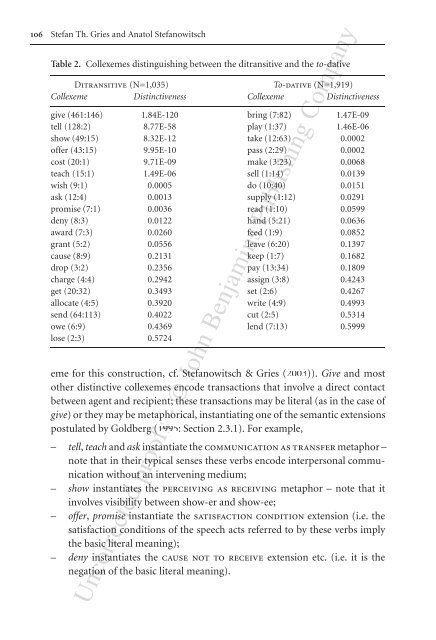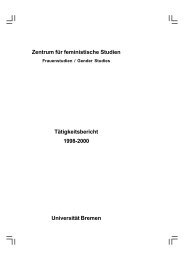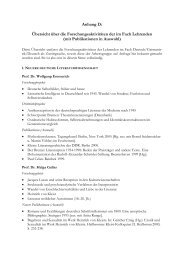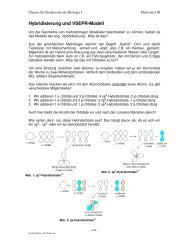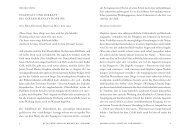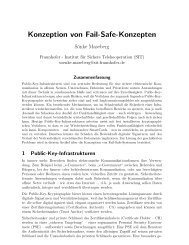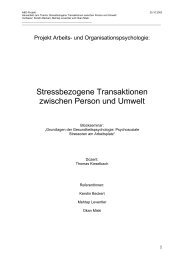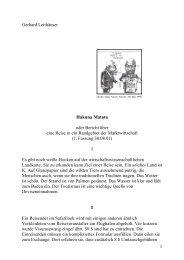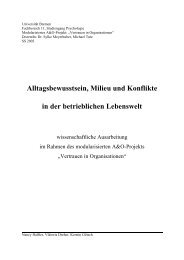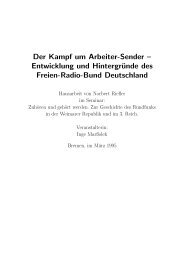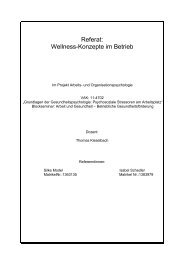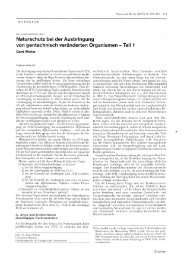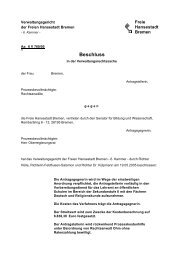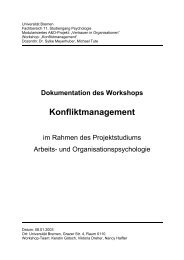Extending collostructional analysis - www-user
Extending collostructional analysis - www-user
Extending collostructional analysis - www-user
You also want an ePaper? Increase the reach of your titles
YUMPU automatically turns print PDFs into web optimized ePapers that Google loves.
106 Stefan Th. Gries and Anatol Stefanowitsch<br />
Table 2. Collexemes distinguishing between the ditransitive and the to-dative<br />
Ditransitive (N=1,035) To-dative (N=1,919)<br />
Collexeme Distinctiveness Collexeme Distinctiveness<br />
give (461:146) 1.84E-120 bring (7:82) 1.47E-09<br />
tell (128:2) 8.77E-58 play (1:37) 1.46E-06<br />
show (49:15) 8.32E-12 take (12:63) 0.0002<br />
offer (43:15) 9.95E-10 pass (2:29) 0.0002<br />
cost (20:1) 9.71E-09 make (3:23) 0.0068<br />
teach (15:1) 1.49E-06 sell (1:14) 0.0139<br />
wish (9:1) 0.0005 do (10:40) 0.0151<br />
ask (12:4) 0.0013 supply (1:12) 0.0291<br />
promise (7:1) 0.0036 read (1:10) 0.0599<br />
deny (8:3) 0.0122 hand (5:21) 0.0636<br />
award (7:3) 0.0260 feed (1:9) 0.0852<br />
grant (5:2) 0.0556 leave (6:20) 0.1397<br />
cause (8:9) 0.2131 keep (1:7) 0.1682<br />
drop (3:2) 0.2356 pay (13:34) 0.1809<br />
charge (4:4) 0.2942 assign (3:8) 0.4243<br />
get (20:32) 0.3493 set (2:6) 0.4267<br />
allocate (4:5) 0.3920 write (4:9) 0.4993<br />
send (64:113) 0.4022 cut (2:5) 0.5314<br />
owe (6:9) 0.4369 lend (7:13) 0.5999<br />
lose (2:3) 0.5724<br />
eme for this construction, cf. Stefanowitsch & Gries (2003)). Give and most<br />
other distinctive collexemes encode transactions that involve a direct contact<br />
between agent and recipient; these transactions may be literal (as in the case of<br />
give) or they may be metaphorical, instantiating one of the semantic extensions<br />
postulated by Goldberg (1995: Section 2.3.1). For example,<br />
– tell, teach and ask instantiate the communication as transfer metaphor –<br />
note that in their typical senses these verbs encode interpersonal communication<br />
without an intervening medium;<br />
– show instantiates the perceiving as receiving metaphor – note that it<br />
involves visibility between show-er and show-ee;<br />
– offer, promise instantiate the satisfaction condition extension (i.e. the<br />
satisfaction conditions of the speech acts referred to by these verbs imply<br />
the basic literal meaning);<br />
– deny instantiates the cause not to receive extension etc. (i.e. it is the<br />
negation of the basic literal meaning).<br />
Uncorrected proofs - © John Benjamins Publishing Company


